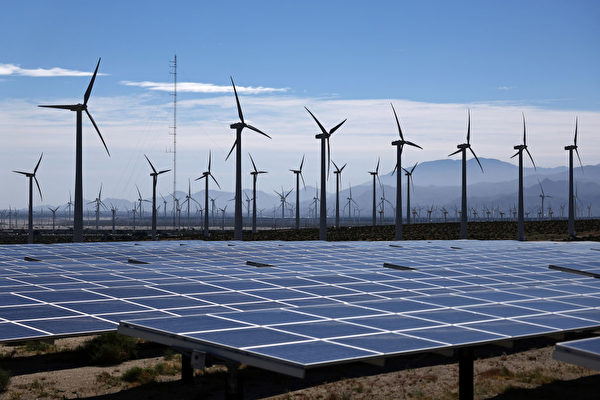In the past 38 days, for 30 days, California’s energy demand has been entirely supplied by renewable energy sources, ranging from 15 minutes to 6 hours continuously. This marks the first time that California’s wind, solar, and hydropower sources have demonstrated such stable performance over several weeks.
Energy experts predict that by 2035, California could achieve 100% reliance on renewable energy. However, the related policies being promoted by California have also sparked ongoing controversies.
According to an online report by Newsweek, Professor Mark Z. Jacobson from Stanford University released data on renewable energy usage on X platform, announcing that for the past 38 days, the supply exceeded California’s demand for 30 days. This energy expert believes that with technological advancements, this achievement will “grow year by year.”
Data from April 12 showed that the electricity supply from solar, wind, geothermal, and hydropower sources not only exceeded demand for six hours but also accounted for two-thirds of the total daily electricity supply. According to data from last week, over 80% of renewable energy electricity came from solar power.
Ian Magruder from the non-profit organization Rewiring America responded to Jacobson’s post, stating: “This has never happened in history. Yes, since 2022, California briefly reached this milestone on a few sunny days, but never achieved such stable power supply for two consecutive weeks.”
Magruder mentioned that California has the world’s most advanced grid-connected battery storage facilities, which came online in January this year. These facilities can store unused renewable energy for use during the night when solar energy is unavailable.
According to the latest data published by the California Energy Commission (CEC) last year, over 37% of California’s electricity came from a combination of renewable sources in 2021, increasing by 2.7% from the previous year. However, Jacobson predicts that California will achieve 100% reliance on wind, hydropower, and solar energy by 2035.
California’s official goal is to have the entire state’s power supply come from carbon-free sources by 2045. The state government has mandated that new homes must install solar panels, and plans are in place for all new vehicles sold in California to meet zero-emission standards by 2035. Opponents argue that the outcomes of California’s advancement in these policies are unsatisfactory.
John Stossel, a producer for Stossel TV, award-winning journalist, and bestselling author, discussed some issues related to renewable energy in his latest documentary series “Juice: Power, Politics, and the Grid.”
He pointed out that the rate of electricity price increases in California is three times that of other states. In Washington and Oregon, residents pay around 11 and 13 cents per kilowatt-hour, respectively, while in California, it is close to 30 cents.
Stossel believes that mandating new homes to install solar panels is one of the main reasons why California has become the region with the highest average home prices (nearly $800,000) in the U.S. Wealthier families can benefit from government subsidies for solar power systems, but less affluent individuals often end up renting. This translates to taxpayers subsidizing the rich.
He also mentioned that wind turbines have wear and tear issues, needing maintenance shutdowns after just 10 years, with repair costs almost equivalent to a new generator. He stated that for companies claiming to be “green,” this investment remains profitable due to government subsidies.
Edward Ring, co-founder and senior fellow of the California Policy Center, told Fox News Digital in February last year that if California leaders continue to push for a transition toward renewable energy sources, the government will have to rapidly build a large number of wind and solar power systems in a short period. Even if this goal can be achieved without blackouts, consumers’ burden will become very heavy.
This policy expert also expressed concerns that in the coming years, California’s grid may face risks of blackouts and malfunctions.
Can solar power significantly reduce climate change? Is wind energy particularly environmentally friendly? In response to this, ecologist Merlin Tuttle pointed out: “Just to manufacture one wind turbine, we need to extract 900 tons of steel, 2,500 tons of concrete, and 45 tons of non-renewable plastic. Then we have to transport these materials, burn fuel, and ship them worldwide. None of the materials that make up a wind turbine are renewable.” ◇

